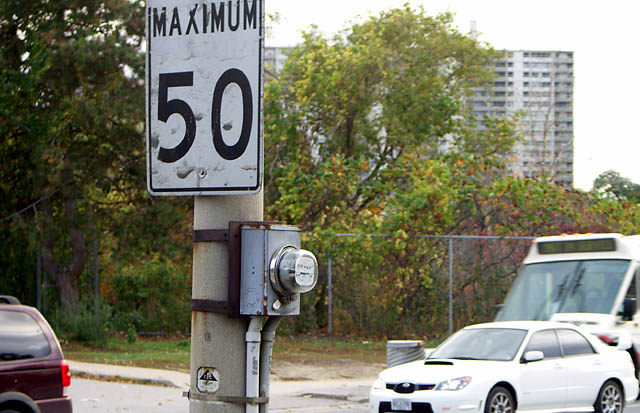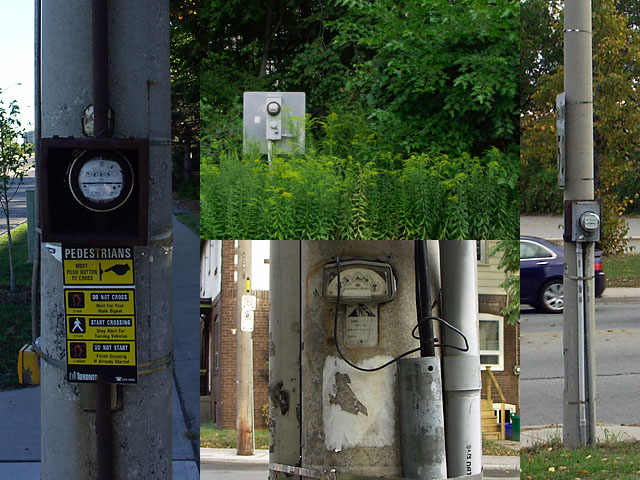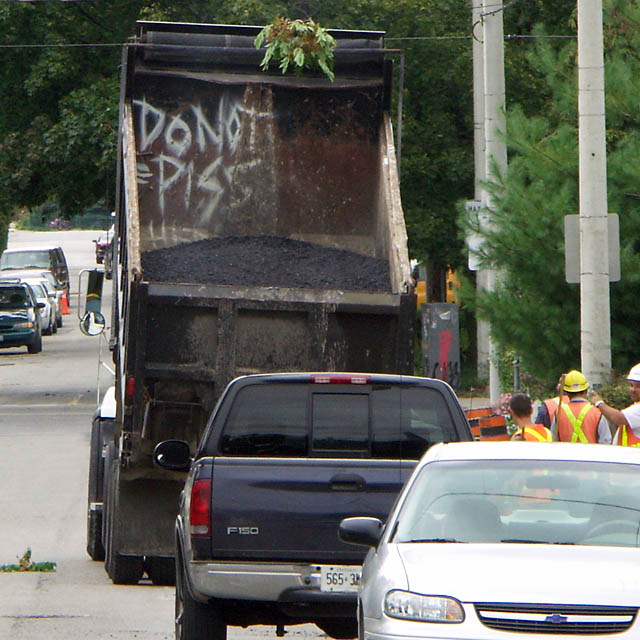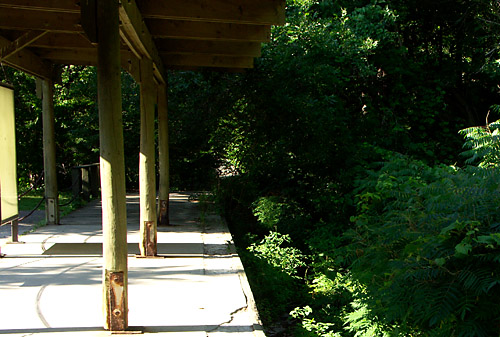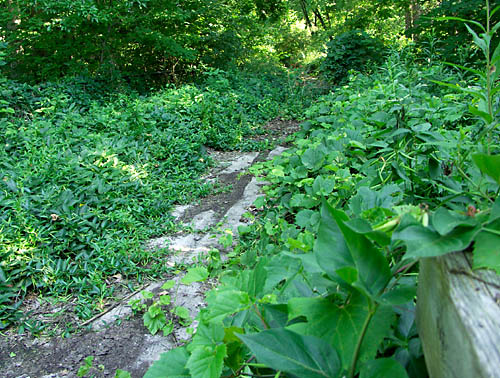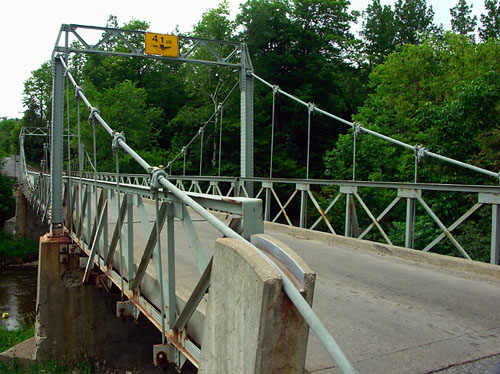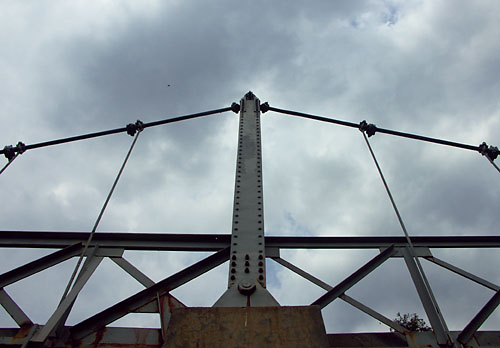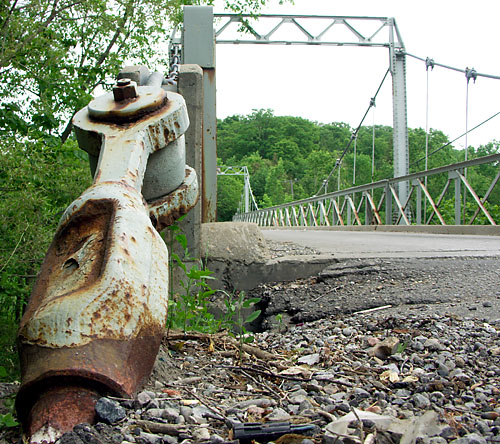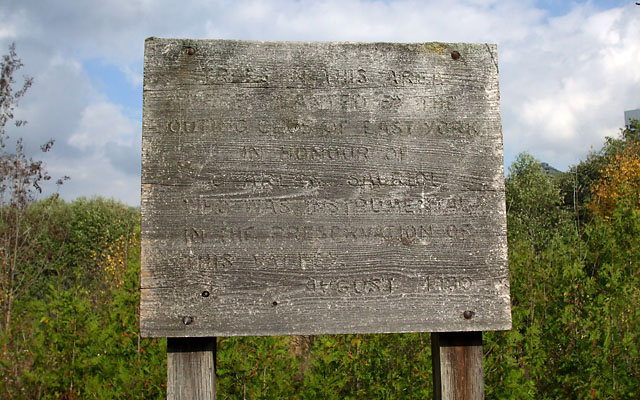
The next time you’re exploring the wooded trails near the marsh in E.T. Seton Park, you may stumble upon a weathered sign overlooking a wet meadow. Still barely legible, it reads:
Trees in this area
were planted by the
Outing Club of East York
in honour of
Charles Sauriol
who was instrumental
in the preservation of
this valley
August 1980
The Outing Club of East York‘s Diane Vieira told me that in its early years, OCEY was very active in planting trees in and around Toronto, including at this location and others in the Don Valley. Unfortunately, they had to stop planting a number of years ago when they could no longer obtain trees from the Ministry of Natural Resources.
Charles Sauriol is best known to Torontonians—especially east enders and naturalists—as the man who spent virtually his entire life fighting to preserve and enhance the Valley’s natural heritage. His half-dozen books, including Remembering the Don, Tales of the Don, and Pioneers of the Don, together form the closest thing we have to a definitive cultural history of the Don Valley.
Named a member of the Order of Canada in 1989, Sauriol’s contributions have been recognized in parkettes, conservation areas, and even an annual fundraising dinner all named in his honour. I can’t help but think that of everything bearing his name, Sauriol would be most proud of the little sign that gets a little more lost in the budding wilderness of the Don each year.
Related: Joe Cooper wrote about OCEY in last week’s East York-Riverdale Mirror.
A version of this article originally appeared on Torontoist.
